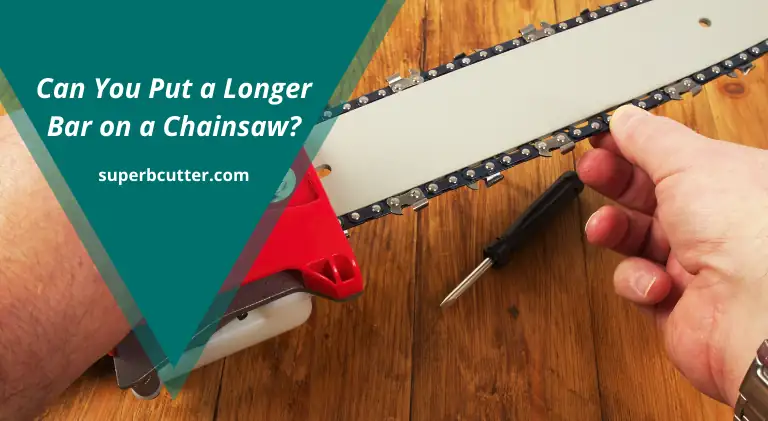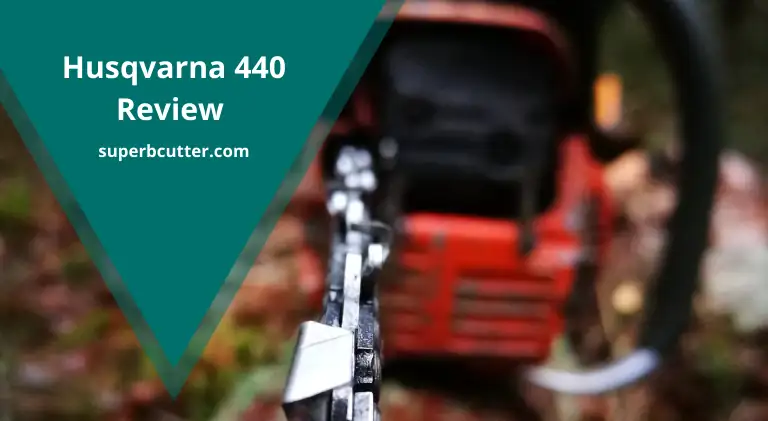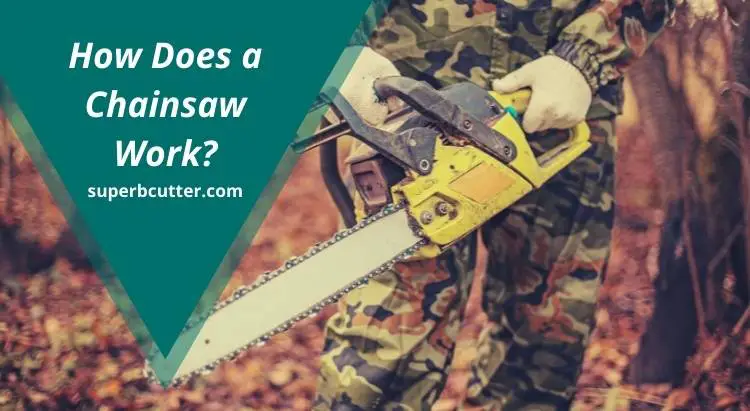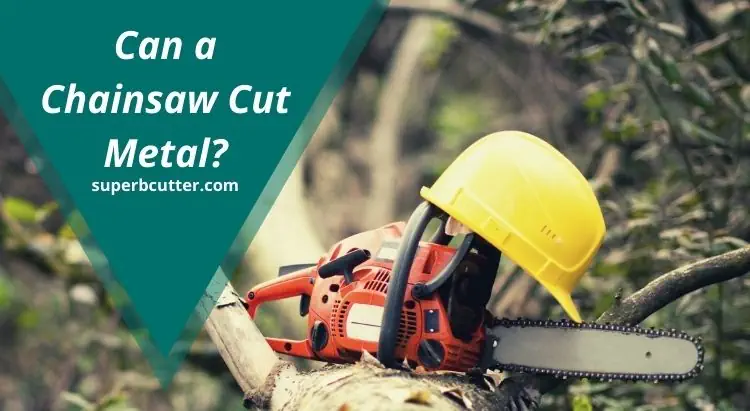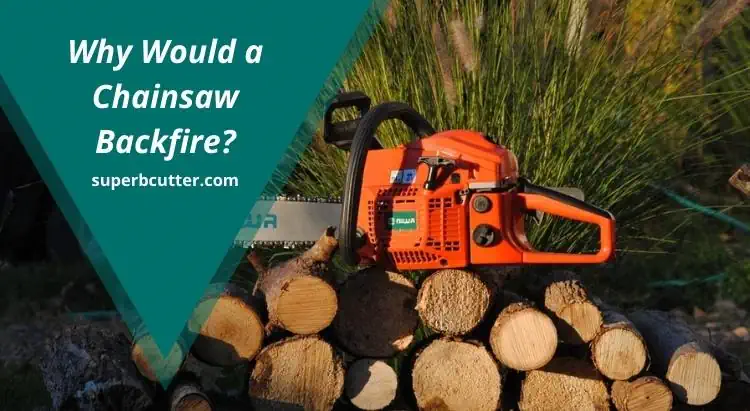Can Chainsaws Overheat? – Know the Reasons
Chainsaws are a great tool around the house; you can use them to handle various tasks such as cutting trees, chopping wood for kindling, and even cutting metal. But one of the biggest concerns when using a chainsaw is overheating.
Can chainsaws overheat? Yes, chainsaws can overheat; it happens only when something is wrong with the saw. In most cases, the main reason behind an overheating chainsaw is a clogged air filter. However, it can also be caused by low-quality fuel, worn-out components, improper lubrication, or a malfunctioning spark plug.
When a chainsaw runs for an extended period or at high speed, it will generate heat, slowly increasing and leading to overheating.
If the chainsaw isn’t cooled down with a fan or by taking a break, it can eventually get superheated and seize the engine. This can damage the saw and potentially put the user in danger.
While the above-mentioned are the main reasons behind an overheating chainsaw, several other factors can play a role in the saw getting too hot. In this article, I will explain some of the most common reasons behind an overheating chainsaw and how to fix it.
Understanding Chainsaw Overheating
When using your chainsaw, it’s crucial to recognize overheating, as it can lead to reduced performance and potential damage. A well-maintained chainsaw should operate within a safe temperature range.
Causes of Overheating
Several factors contribute to your chainsaw overheating:
- Inadequate Lubrication: A chainsaw requires constant lubrication. If the oil reservoir is depleted or the oiling system malfunctions, friction increases, leading to excessive heat.
- Dirty Air Filter: A clogged air filter restricts airflow to the engine, causing it to work harder and overheat.
- Incorrect Fuel Mixture: A chainsaw runs on a mixture of gasoline and oil. An incorrect ratio can result in higher temperatures.
- Heavy Use: Prolonged, intense operation without breaks can lead to overheating, as the saw doesn’t have time to cool down.
- Damaged Components: A defective muffler or a spark arrestor clogged with carbon deposits can cause overheating by impeding proper exhaust flow.
Signs of an Overheating Chainsaw
Be aware of these indicators that your chainsaw may be overheating:
- Dark Smoke: An excess of smoke, incredibly dark in color, can signal the chainsaw is too hot.
- Reduced Performance: If the saw stalls during operation or you notice a drop in engine output, this can indicate excessive heat.
- High Temperature: The chainsaw will be noticeably hotter to the touch. You may sometimes see the bar turn a bluish color from extreme heat.
- The smell of Burning: An acrid smell can indicate that parts of the chainsaw are overheating and potentially starting to burn.
Key Components Affecting Temperature
The temperature of your chainsaw is influenced by several critical components that ensure its optimal operation and prevent overheating. Proper maintenance of these can extend the life of your chainsaw and improve performance.
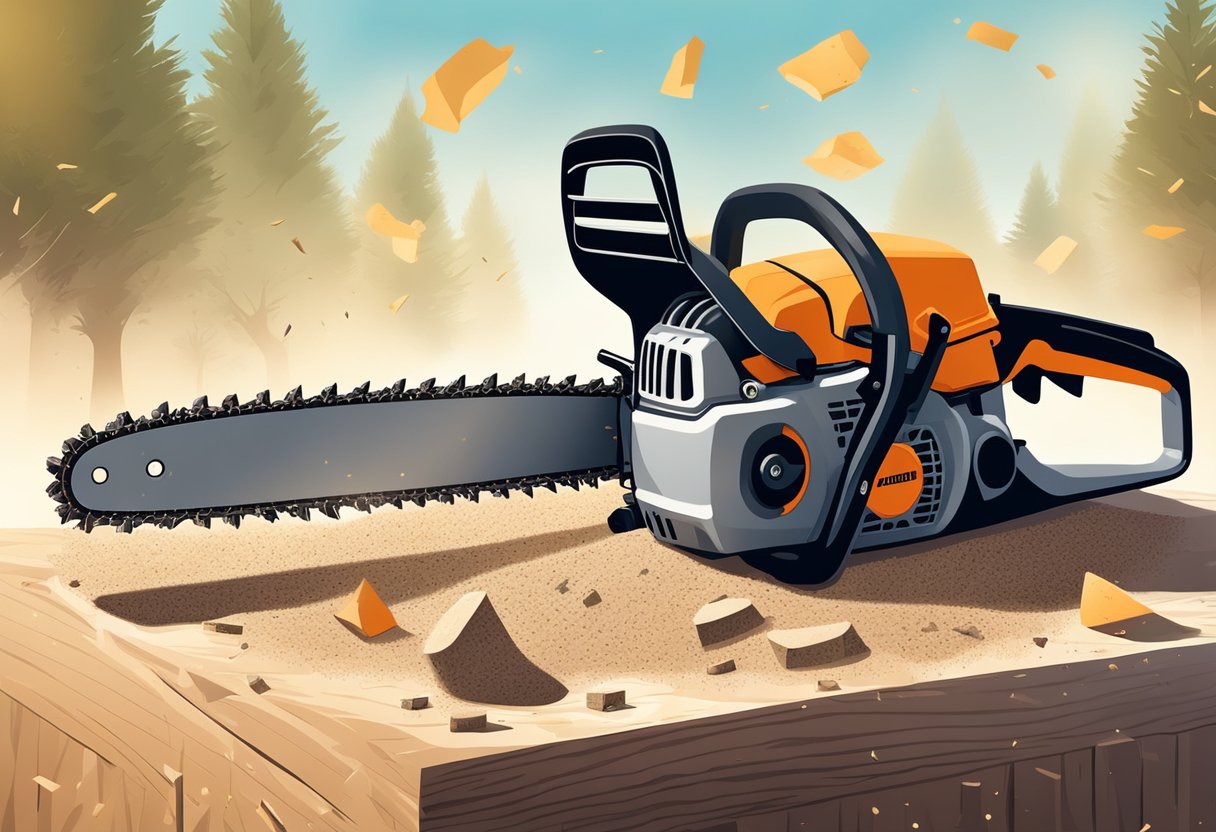
Engine and Combustion System
Your chainsaw’s engine and combustion system are central to its ability to operate. The piston moves within the cylinder, creating friction and generating heat. High RPMs exacerbate this during intense periods of use.
The ignition system sparks fuel in the combustion chamber, which must maintain a balanced oil-to-fuel mixture ratio for efficient running and temperature control.
Lubrication and Coolant
The lubrication system plays a vital role in managing your chainsaw’s temperature. Quality chainsaw oil is essential to minimize friction between the bar and chain, which can cause significant heat buildup.
An inadequate or incorrect oil-to-fuel mixture ratio can damage the engine and lead to overheating. Concurrently, the chainsaw’s cooling system, often involving fins on the flywheel and a fan, helps dissipate heat from the engine.
Air Filtration and Exhaust
The chainsaw’s air filter ensures that clean air enters the engine for combustion, while the exhaust port is equipped with a spark arrestor screen that allows hot gases to exit. A clogged air filter or exhaust can restrict airflow, causing the engine to run hotter.
Proper ventilation is crucial for maintaining a consistent operational temperature and preventing the exhaust system from overheating. Regularly inspect and repair any blockages to maintain proper airflow and temperature control.
Preventative Measures and Maintenance
To ensure your chainsaw operates efficiently and to prevent overheating, you must follow proper operation guidelines, maintain routine inspections and care, and promptly address any common issues. Adhering to these practices will prolong the life of your chainsaw and ensure safe operation.
Proper Chainsaw Operation
When operating your chainsaw, maintain a firm grip and proper stance to reduce the likelihood of kickback. Ensure your chainsaw’s chain tension is correct; a chain that is too tight can bind and overheat, while a too loose chain can come off. This balance is crucial for safe and efficient cutting.
Maintenance Routines
Your chainsaw requires regular maintenance to function correctly:
- Lubrication: Keep the chain well-lubricated to prevent undue friction and wear. Use the right oil recommended for your chainsaw model.
- Sharp Chain: Sharpen the chain regularly to ensure clean cuts, which require less effort from both you and the saw.
- Air Intake Areas: Clean the air intake areas frequently to prevent debris from clogging, which can lead to overheating.
- Fuel Mixture: Prepare the proper oil-to-fuel ratio for your saw. An incorrect oil-fuel ratio can cause the engine to run lean, potentially causing overheating.
Addressing Common Issues
Insufficient Lubrication: If your chainsaw produces fine sawdust instead of chips or if you notice chain chatter, it might be due to inadequate lubrication. Regularly check and fill the oil reservoir and inspect the oiler for proper functioning.
Air Flow Obstructions: Eliminate any obstructions in the starter mechanism and cooling fins since they can cause a drop in engine output and overheating. Clean the fins and other components as part of your routine maintenance to ensure efficient heat dissipation.
Following these guidelines, your focus on preventative maintenance will optimize your chainsaw’s performance and mitigate the risk of overheating.
Troubleshooting and Solutions
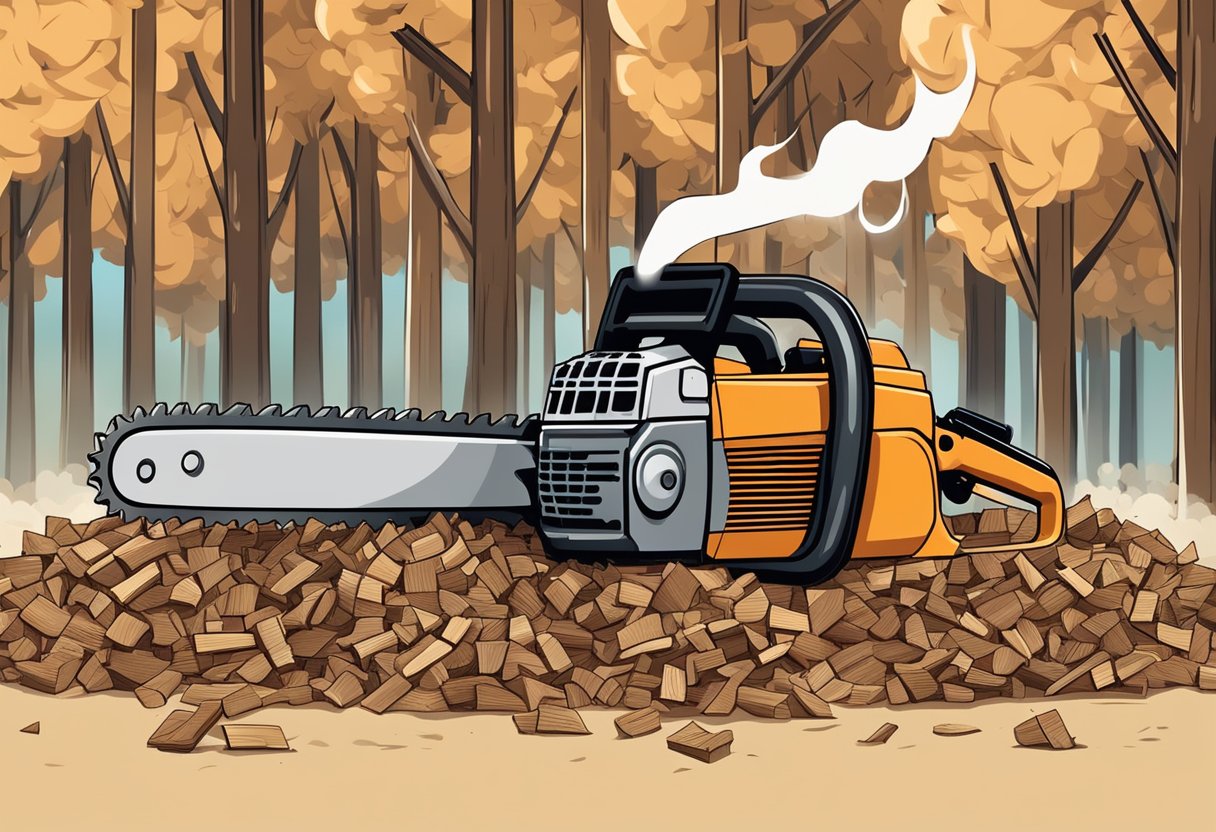
Chainsaws may overheat due to issues such as blockages, incorrect fuel mixes, or a dull chain causing too much friction. Regular maintenance is key to preventing and addressing these problems effectively.
Identifying and Resolving Blockages
When your chainsaw overheats, check for debris and sawdust that might be causing blockages. A clogged air filter, which may be a paper or foam type, compromises the airflow to the engine, leading to overheating.
- Exhaust Port: Remove any carbon deposits that can clog the muffler and exhaust port. Use a cleaning solvent and a brush for stubborn build-up.
- Air Filter: Clean a foam air filter with soap and water, and replace a paper air filter if it’s dirty or damaged.
Adjusting Fuel and Oil Mixes
An incorrect oil-to-fuel ratio can cause your chainsaw to malfunction.
- Oil/Fuel Mixture: Ensure you follow the manufacturer’s recommended ratio, typically 50:1 or 40:1, to prevent engine issues.
- Fuel Quality: Always use fresh fuel and the correct type of two-stroke oil to prevent the formation of black carbon deposits in the carburetor.
Last Minute Thoughts!
So, can chainsaws overheat? The answer is yes, they do. But with proper maintenance, you can prevent it from happening.
Clean the air filter, use the right fuel and oil mix, sharpen your chain regularly, and maintain proper ventilation while working.
If all these steps are followed carefully, you should have no problems with overheating chainsaw. So get out there and enjoy your work!

